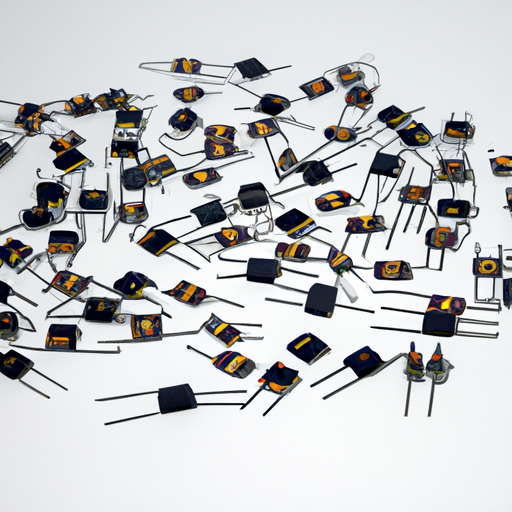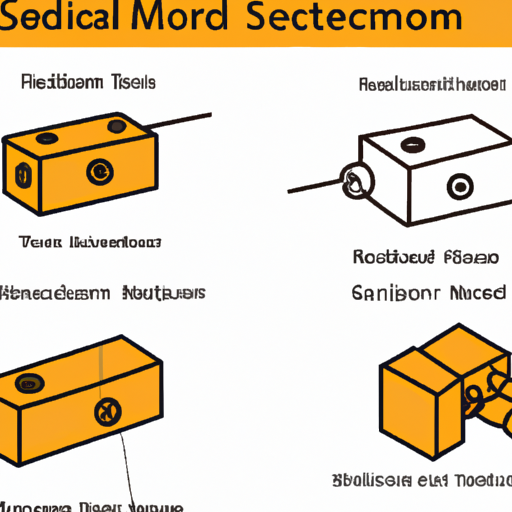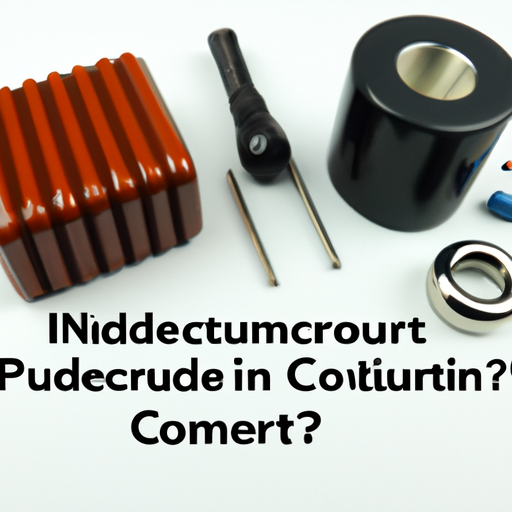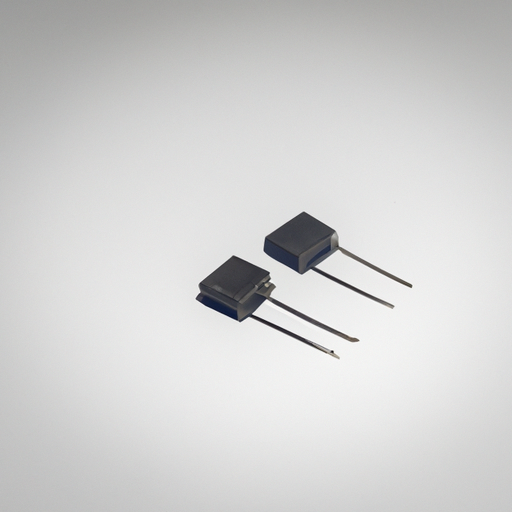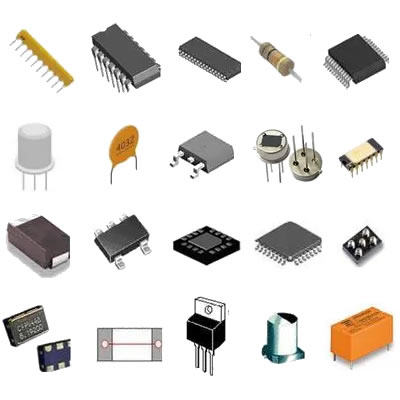What are the product characteristics of chip inductors?
Product Characteristics of Chip Inductors
I. Introduction
A. Definition of Chip Inductors
Chip inductors are passive electronic components that store energy in a magnetic field when electrical current flows through them. They are typically small, surface-mount devices (SMDs) designed for use in compact electronic circuits. Their primary function is to oppose changes in current, making them essential for various applications in modern electronics.
B. Importance of Chip Inductors in Modern Electronics
In today's fast-paced technological landscape, chip inductors play a crucial role in the performance and efficiency of electronic devices. They are integral to power management, signal processing, and filtering applications, contributing to the overall functionality of devices ranging from smartphones to automotive systems. As electronic devices become smaller and more complex, the demand for high-performance chip inductors continues to grow.
C. Purpose of the Document
This document aims to provide a comprehensive overview of the product characteristics of chip inductors, including their basic principles, types, key characteristics, performance metrics, applications, and selection criteria. Understanding these aspects is vital for engineers and designers when integrating chip inductors into their electronic designs.
II. Basic Principles of Inductance
A. Definition of Inductance
Inductance is the property of an electrical conductor that opposes changes in current. It is measured in henries (H) and is defined as the ratio of the induced electromotive force (EMF) to the rate of change of current.
B. How Inductors Work
When current flows through a coil of wire, it generates a magnetic field around it. If the current changes, the magnetic field also changes, inducing a voltage (or EMF) in the opposite direction. This phenomenon is known as self-induction. The ability of an inductor to store energy in its magnetic field is what makes it a valuable component in electronic circuits.
C. Role of Inductors in Circuits
Inductors are used in various applications, including filtering, energy storage, and signal processing. They can smooth out voltage fluctuations in power supply circuits, filter out unwanted frequencies in communication systems, and store energy in switching power supplies.
III. Types of Chip Inductors
A. Fixed Inductors
Fixed inductors have a predetermined inductance value and are commonly used in applications where a stable inductance is required.
B. Variable Inductors
Variable inductors allow for adjustable inductance values, making them suitable for tuning applications in radio frequency (RF) circuits.
C. Shielded vs. Unshielded Inductors
Shielded inductors are designed to minimize electromagnetic interference (EMI) by enclosing the inductor in a magnetic shield. Unshielded inductors, while typically smaller and less expensive, may be more susceptible to EMI.
D. Specialty Inductors (e.g., RF Inductors)
Specialty inductors are designed for specific applications, such as RF inductors, which are optimized for high-frequency performance.
IV. Key Product Characteristics
1. Measurement Units (Henries, Millihenries, etc.)
Inductance is measured in henries (H), with common values for chip inductors ranging from microhenries (µH) to millihenries (mH).
2. Tolerance Levels
Tolerance indicates the allowable variation in inductance value. It is crucial for ensuring that the inductor performs as expected in a circuit.
1. Importance of Low DCR
DC resistance is the resistance of the inductor when a direct current flows through it. Low DCR is essential for minimizing power losses and improving efficiency.
2. Impact on Performance
High DCR can lead to increased heat generation and reduced performance, particularly in high-current applications.
1. Saturation Current
Saturation current is the maximum current an inductor can handle before its inductance value begins to decrease significantly. Exceeding this current can lead to performance degradation.
2. Thermal Considerations
Inductors generate heat during operation, and thermal management is crucial to ensure reliable performance. Designers must consider the thermal characteristics of the inductor in their applications.
1. Definition and Importance
The quality factor (Q) is a measure of an inductor's efficiency, defined as the ratio of its inductive reactance to its resistance at a specific frequency. A higher Q indicates lower energy losses.
2. Applications of High Q Inductors
High Q inductors are preferred in RF applications where signal integrity is critical, as they minimize losses and improve overall circuit performance.
1. Definition and Significance
Self-resonant frequency is the frequency at which the inductive reactance equals the capacitive reactance of the inductor, causing it to resonate. Beyond this frequency, the inductor behaves more like a capacitor.
2. Effects on Circuit Performance
Understanding the SRF is essential for ensuring that the inductor operates effectively within the desired frequency range of the application.
1. Standard Sizes and Packages
Chip inductors come in various sizes and packages, with standard dimensions that facilitate easy integration into circuit designs.
2. Impact on Design and Layout
The size of the inductor can affect the overall layout of the circuit board, influencing factors such as component placement and signal integrity.
1. Definition and Relevance
The temperature coefficient indicates how the inductance value changes with temperature. It is crucial for applications that experience varying thermal conditions.
2. Impact on Performance in Varying Conditions
Inductors with a low temperature coefficient are preferred for applications requiring stable performance across a wide temperature range.
1. Core Materials (Ferrite, Iron Powder, etc.)
The choice of core material affects the inductor's performance characteristics, including inductance value, saturation current, and frequency response.
2. Wire Materials (Copper, Aluminum, etc.)
The wire material used in the inductor also impacts its performance, with copper being the most common due to its excellent conductivity.
V. Performance Characteristics
1. Behavior at Different Frequencies
Chip inductors exhibit different behaviors at various frequencies, influencing their effectiveness in specific applications.
2. Applications in RF and High-Frequency Circuits
Inductors designed for high-frequency applications must maintain performance across a wide frequency range, making their frequency response a critical characteristic.
1. Operating Temperature Range
Inductors must operate effectively within specified temperature ranges to ensure reliability and performance.
2. Effects of Temperature on Inductance
Temperature variations can affect inductance values, making it essential to select inductors with appropriate temperature stability for the application.
1. Long-term Performance
The aging of inductors can lead to changes in inductance and other performance characteristics over time.
2. Factors Affecting Longevity
Environmental factors, such as humidity and temperature fluctuations, can impact the longevity and reliability of chip inductors.
VI. Applications of Chip Inductors
A. Power Supply Circuits
Chip inductors are widely used in power supply circuits to filter and smooth voltage levels, ensuring stable operation.
B. RF and Communication Systems
In RF applications, chip inductors are essential for tuning and filtering signals, contributing to the overall performance of communication systems.
C. Filtering Applications
Inductors are used in various filtering applications to eliminate unwanted frequencies and noise from signals.
D. Energy Storage in Power Electronics
Chip inductors play a vital role in energy storage for switching power supplies, enabling efficient energy transfer.
E. Automotive and Industrial Applications
In automotive and industrial settings, chip inductors are used for power management, signal processing, and noise reduction.
VII. Selection Criteria for Chip Inductors
A. Application Requirements
When selecting chip inductors, it is essential to consider the specific requirements of the application, including inductance value, current rating, and frequency response.
B. Environmental Considerations
Designers must account for environmental factors, such as temperature and humidity, that may affect the performance and reliability of the inductor.
C. Cost vs. Performance Trade-offs
Balancing cost and performance is crucial when selecting chip inductors, as higher-performance components may come at a premium.
D. Manufacturer Specifications and Quality Assurance
Reviewing manufacturer specifications and quality assurance processes is vital to ensure the selected inductors meet the required performance standards.
VIII. Conclusion
A. Summary of Key Characteristics
Chip inductors are essential components in modern electronics, with key characteristics such as inductance value, DC resistance, current rating, quality factor, and self-resonant frequency playing critical roles in their performance.
B. Future Trends in Chip Inductor Technology
As technology continues to evolve, chip inductors are expected to become even more compact and efficient, with advancements in materials and manufacturing processes driving innovation.
C. Final Thoughts on the Importance of Chip Inductors in Electronics
Understanding the product characteristics of chip inductors is vital for engineers and designers, as these components significantly impact the performance and reliability of electronic devices. As the demand for high-performance electronics grows, chip inductors will remain a cornerstone of modern circuit design.
IX. References
A. Academic Journals
- IEEE Transactions on Power Electronics
- Journal of Applied Physics
B. Industry Standards and Guidelines
- IPC Standards for Electronic Components
- IEC Standards for Inductors
C. Manufacturer Datasheets and Technical Resources
- Manufacturer websites and technical documentation for specific chip inductor models.
This comprehensive overview of chip inductors highlights their significance in modern electronics, providing valuable insights for engineers and designers in selecting the right components for their applications.

